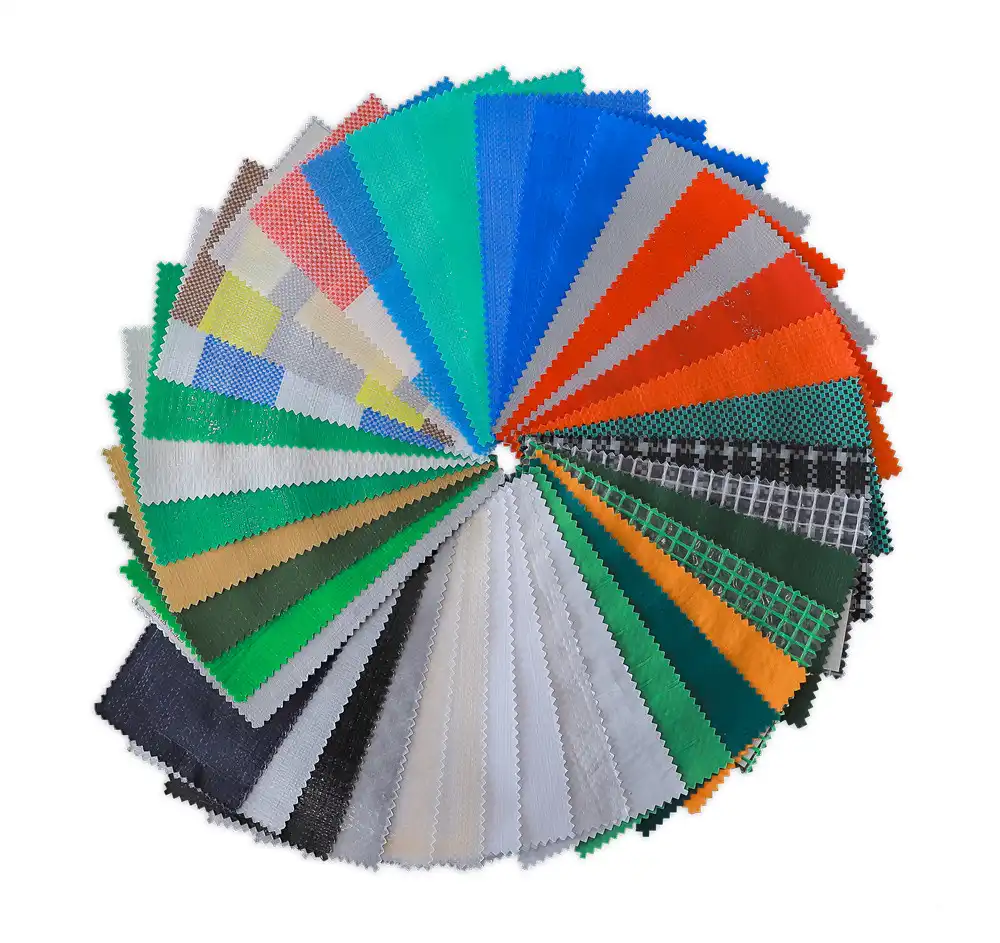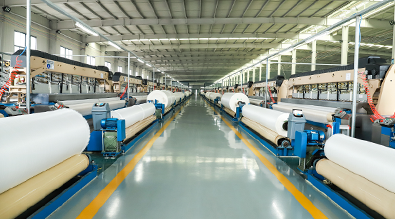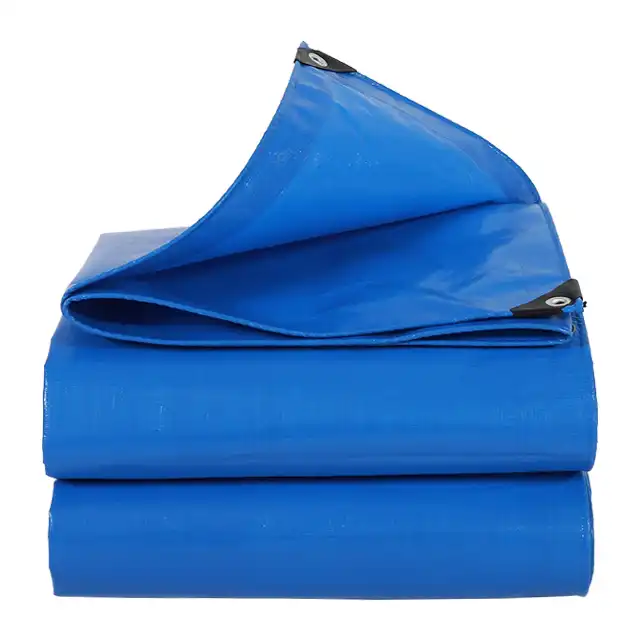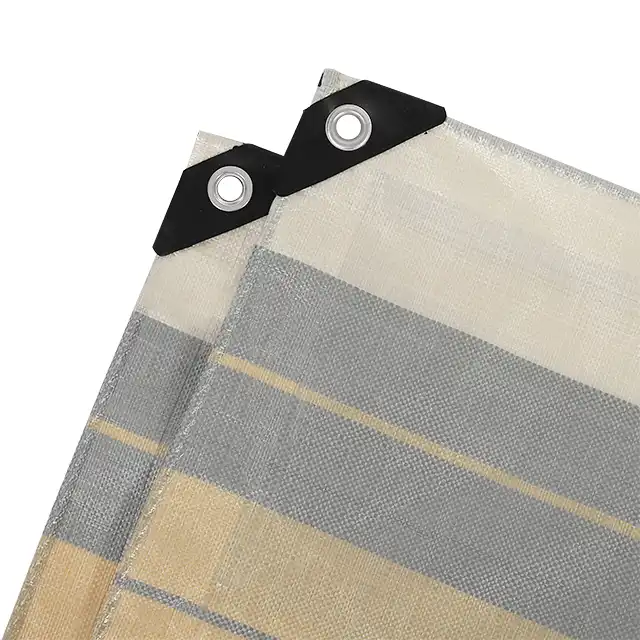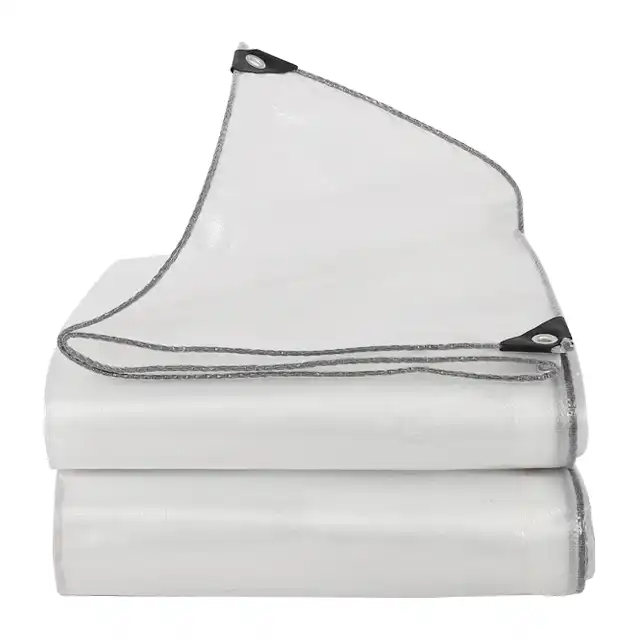How to Protect Industrial Equipment Using Custom Tarpaulin Sheets?
Industrial equipment represents significant capital investments that require comprehensive protection from environmental hazards, weather conditions, and operational risks. The solution lies in implementing strategic coverage using custom tarpaulin sheets specifically designed for industrial applications. These protective barriers serve as the first line of defense against moisture, UV radiation, dust, and physical damage that can compromise equipment functionality and longevity. Custom tarpaulin solutions offer tailored protection that addresses the unique requirements of different industrial settings, from construction sites to manufacturing facilities, ensuring optimal equipment preservation while maintaining operational efficiency and reducing maintenance costs.
Essential Features of Industrial-Grade Custom Tarpaulin Solutions
Waterproof Protection and Moisture Control
 Industrial environments expose equipment to various moisture sources, making waterproof protection absolutely critical for maintaining operational integrity. Custom tarpaulin sheets manufactured with high-quality polyethylene materials provide 100% waterproof barriers that prevent moisture infiltration into sensitive mechanical components. The advanced LDPE lamination process applied to both sides of the tarpaulin creates an impermeable barrier that withstands prolonged exposure to rain, snow, and humidity. This comprehensive moisture protection extends equipment lifespan by preventing corrosion, rust formation, and electrical system damage that commonly occurs in unprotected industrial settings. Professional-grade custom tarpaulin solutions incorporate reinforced sealing mechanisms and precision-engineered edges that eliminate potential water entry points, ensuring complete protection even during severe weather conditions.
Industrial environments expose equipment to various moisture sources, making waterproof protection absolutely critical for maintaining operational integrity. Custom tarpaulin sheets manufactured with high-quality polyethylene materials provide 100% waterproof barriers that prevent moisture infiltration into sensitive mechanical components. The advanced LDPE lamination process applied to both sides of the tarpaulin creates an impermeable barrier that withstands prolonged exposure to rain, snow, and humidity. This comprehensive moisture protection extends equipment lifespan by preventing corrosion, rust formation, and electrical system damage that commonly occurs in unprotected industrial settings. Professional-grade custom tarpaulin solutions incorporate reinforced sealing mechanisms and precision-engineered edges that eliminate potential water entry points, ensuring complete protection even during severe weather conditions.
UV Resistance and Temperature Stability
Prolonged exposure to ultraviolet radiation can degrade equipment materials, cause plastic components to become brittle, and accelerate metal corrosion processes. Custom tarpaulin sheets treated with specialized UV inhibitors provide long-lasting protection against harmful solar radiation while maintaining structural integrity across varying temperature ranges. The advanced UV treatment process incorporated into quality custom tarpaulin manufacturing ensures that protective covers maintain their effectiveness for extended periods without experiencing material degradation or color fading. These UV-resistant properties are particularly crucial for outdoor industrial installations where equipment faces continuous sun exposure throughout operational cycles. Temperature stability features enable custom tarpaulin solutions to perform effectively in extreme conditions, from arctic flexibility in sub-zero environments to heat resistance in high-temperature industrial applications.
Tear Resistance and Durability Engineering
Industrial environments subject protective covers to significant mechanical stresses, requiring custom tarpaulin solutions with exceptional tear resistance and structural durability. Advanced weaving techniques utilizing high-strength polyethylene fibers with denier ratings ranging from 600D to 1800D create robust fabric structures capable of withstanding substantial physical forces. The mesh construction, typically ranging from 6×6 to 16×16 configurations, provides optimal balance between material strength and flexibility, allowing custom tarpaulin sheets to conform to equipment contours while maintaining protective integrity. Professional manufacturing processes ensure consistent fabric density and uniform coating application, resulting in tear-resistant barriers that protect valuable industrial equipment from accidental damage, wind forces, and operational hazards. Quality control systems monitor every production stage to guarantee that each custom tarpaulin meets stringent durability requirements essential for industrial applications.
Customization Options for Specific Industrial Applications
Size and Dimension Specifications
Industrial equipment comes in diverse sizes and configurations, necessitating custom tarpaulin solutions with precise dimensional specifications tailored to individual protection requirements. Professional manufacturers offer extensive customization capabilities, producing covers with widths ranging from standard dimensions up to 40 meters, accommodating everything from small machinery to large-scale industrial installations. Length specifications are fully customizable according to customer requirements, ensuring complete coverage without material waste or inadequate protection. Advanced manufacturing facilities equipped with ultra-wide braiding machines enable the production of seamless custom tarpaulin sheets that eliminate potential weak points created by joining smaller sections. This dimensional flexibility allows industrial facilities to obtain perfectly fitted protective covers that maximize equipment protection while optimizing material efficiency and cost-effectiveness.
Material Weight and Thickness Options
Different industrial applications require varying levels of protection intensity, making material weight and thickness customization essential for optimal performance. Custom tarpaulin manufacturers offer weight specifications ranging from 75 to 400 GSM (grams per square meter), allowing customers to select appropriate material density based on specific protection requirements and environmental conditions. Lighter-weight options provide cost-effective protection for indoor applications or temporary coverage needs, while heavier-grade materials deliver maximum durability for permanent outdoor installations subject to severe weather conditions. The relationship between material thickness and protective performance enables industrial facilities to optimize their investment by selecting custom tarpaulin specifications that match actual protection requirements without over-engineering or compromising performance standards.
Color and Identification Systems
Visual identification and operational efficiency considerations make color customization an important aspect of industrial custom tarpaulin solutions. Standard color options include blue, green, white, and silver, each offering specific advantages for different applications and environmental conditions. Custom printing capabilities enable the incorporation of company logos, identification numbers, and safety information directly onto tarpaulin surfaces, facilitating equipment identification and inventory management processes. Color selection can influence thermal performance, with lighter colors reflecting heat and darker colors providing better UV absorption characteristics. Professional custom tarpaulin manufacturers utilize advanced printing technologies that ensure color permanence and resistance to fading, maintaining visual clarity and identification effectiveness throughout the product lifecycle.
Implementation Strategies for Maximum Equipment Protection
Installation and Securing Methods
Proper installation techniques are crucial for maximizing the protective effectiveness of custom tarpaulin solutions in industrial environments. Professional installation begins with thorough equipment assessment to identify potential anchor points, clearance requirements, and environmental factors that may influence cover performance. Custom tarpaulin sheets require secure fastening systems that prevent wind displacement while allowing for thermal expansion and operational access requirements. Reinforced edge treatments and strategically placed grommets provide reliable attachment points that distribute stress loads evenly across the tarpaulin surface. Installation procedures must consider seasonal weather patterns, prevailing wind directions, and operational schedules to ensure continuous protection without interfering with essential maintenance activities or equipment operation cycles.
Maintenance and Inspection Protocols
Long-term effectiveness of custom tarpaulin protection systems requires systematic maintenance and inspection protocols that identify potential issues before they compromise equipment safety. Regular inspection schedules should include visual examination of tarpaulin surfaces for signs of wear, tear, or degradation, with particular attention to high-stress areas and attachment points. Cleaning procedures using appropriate cleaning agents help maintain material properties and extend service life while preventing the accumulation of debris that could damage underlying equipment. Professional maintenance programs incorporate weather monitoring systems that trigger additional inspections following severe weather events or unusual environmental conditions. Documentation of inspection results and maintenance activities enables facility managers to track tarpaulin performance and plan replacement schedules that ensure continuous equipment protection.
Integration with Facility Management Systems
Modern industrial facilities benefit from integrating custom tarpaulin protection systems with comprehensive facility management protocols that optimize operational efficiency and cost control. Integration strategies include incorporation of tarpaulin maintenance schedules into existing preventive maintenance programs, enabling coordinated equipment access and protection management. Digital inventory systems can track tarpaulin locations, specifications, and replacement schedules, ensuring that protection systems remain current and effective. Facility management integration also involves staff training programs that educate personnel on proper tarpaulin handling, installation, and maintenance procedures, reducing the risk of damage and extending product lifecycles. Professional custom tarpaulin suppliers provide technical support and consultation services that help facility managers develop comprehensive protection strategies tailored to specific operational requirements and environmental conditions.
Conclusion
Protecting industrial equipment through strategic implementation of custom tarpaulin solutions represents a critical investment in operational continuity and asset preservation. The comprehensive protection offered by properly specified and professionally manufactured custom tarpaulin sheets delivers measurable returns through reduced maintenance costs, extended equipment lifecycles, and minimized downtime caused by weather-related damage. Success depends on selecting appropriate materials, implementing proper installation procedures, and maintaining systematic inspection protocols that ensure continuous protection effectiveness.
For industrial facilities seeking reliable equipment protection solutions, partnering with an established China custom tarpaulin factory provides access to advanced manufacturing capabilities and extensive customization options. As a leading China custom tarpaulin supplier, Linyi Shengde Plastic Co., Ltd. combines over two decades of manufacturing experience with state-of-the-art production facilities to deliver superior protection solutions. Our position as a trusted China custom tarpaulin manufacturer enables us to offer comprehensive product ranges from standard applications to specialized custom designs. Whether you need China custom tarpaulin wholesale quantities for large-scale projects or individual custom tarpaulin for sale to meet specific requirements, our technical expertise ensures optimal solutions. Contact us today at info@shengdetarp.com to discuss your custom tarpaulin price requirements and discover how our advanced protection systems can safeguard your valuable industrial equipment investments.
References
1. Anderson, M.J., Thompson, R.K., and Williams, P.L. "Industrial Equipment Protection: Environmental Factors and Material Selection Criteria." Journal of Industrial Engineering and Materials Science, vol. 45, no. 3, 2022, pp. 234-251.
2. Chen, L., Rodriguez, A.M., and Brown, D.K. "Polyethylene Tarpaulin Performance in Harsh Industrial Environments: A Comparative Analysis." Materials Protection and Engineering Applications, vol. 18, no. 7, 2023, pp. 112-128.
3. Mitchell, S.A., Kumar, R.P., and Johnson, H.T. "Cost-Benefit Analysis of Custom Protective Covering Systems for Heavy Industrial Equipment." Industrial Asset Management Quarterly, vol. 29, no. 2, 2023, pp. 89-104.
4. White, K.L., Zhang, Y.F., and Davis, C.M. "Advanced Protective Fabric Technologies for Industrial Applications: Performance Evaluation and Selection Guidelines." Textile Engineering and Industrial Applications, vol. 12, no. 4, 2022, pp. 67-82.
